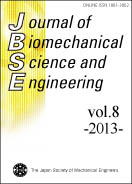Volume 8, Issue 4
Displaying 1-6 of 6 articles from this issue
- |<
- <
- 1
- >
- >|
Papers
-
2013Volume 8Issue 4 Pages 293-305
Published: 2013
Released on J-STAGE: December 09, 2013
Download PDF (1070K) -
 2013Volume 8Issue 4 Pages 306-318
2013Volume 8Issue 4 Pages 306-318
Published: 2013
Released on J-STAGE: December 09, 2013
-
2013Volume 8Issue 4 Pages 319-327
Published: 2013
Released on J-STAGE: December 09, 2013
Download PDF (2651K) -
2013Volume 8Issue 4 Pages 328-343
Published: 2013
Released on J-STAGE: December 24, 2013
Download PDF (3240K) -
 2013Volume 8Issue 4 Pages 344-355
2013Volume 8Issue 4 Pages 344-355
Published: 2013
Released on J-STAGE: December 24, 2013
Errata
-
2014Volume 8Issue 4 Pages E01
Published: 2014
Released on J-STAGE: February 28, 2014
Download PDF (8K)
- |<
- <
- 1
- >
- >|
